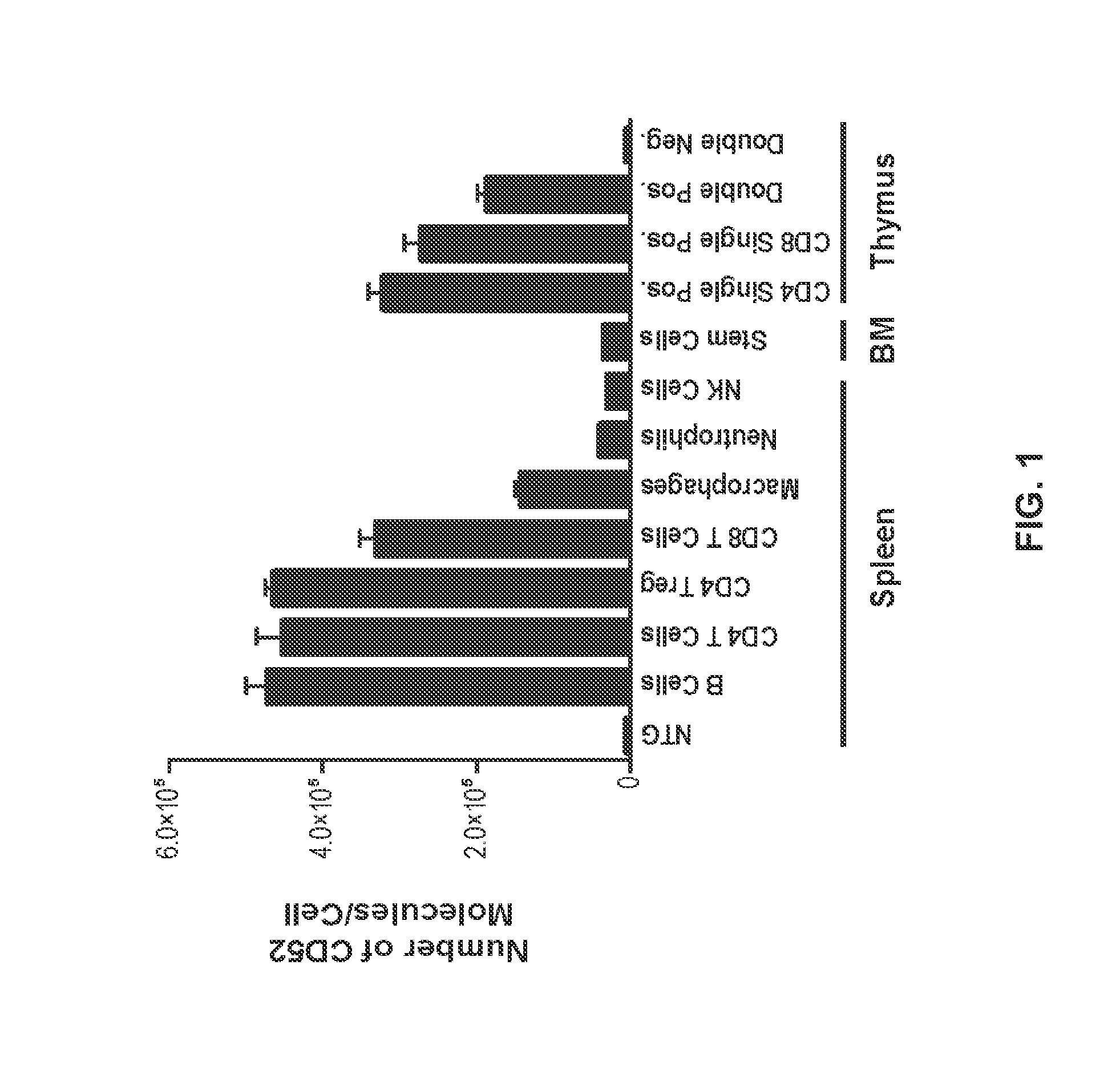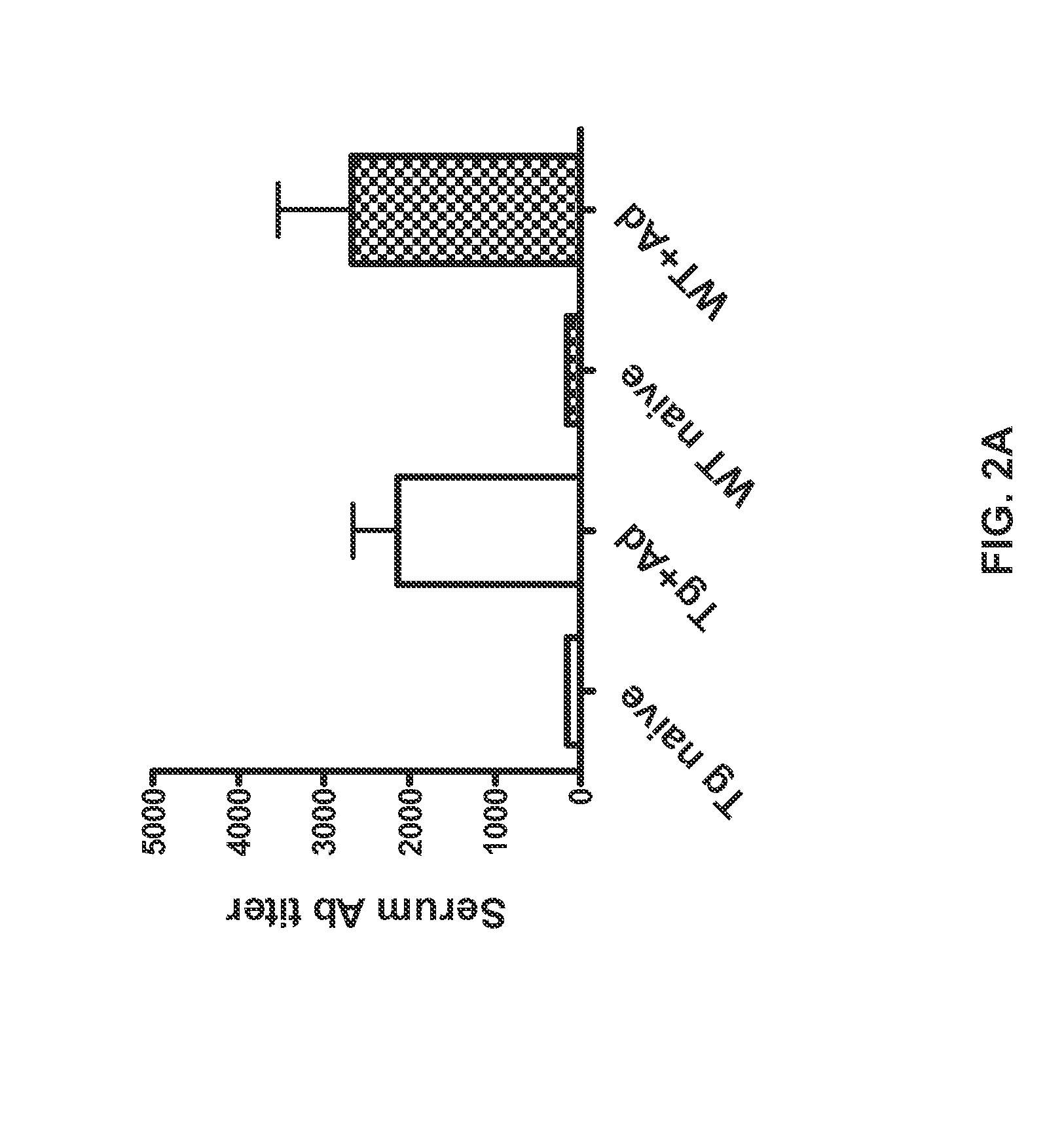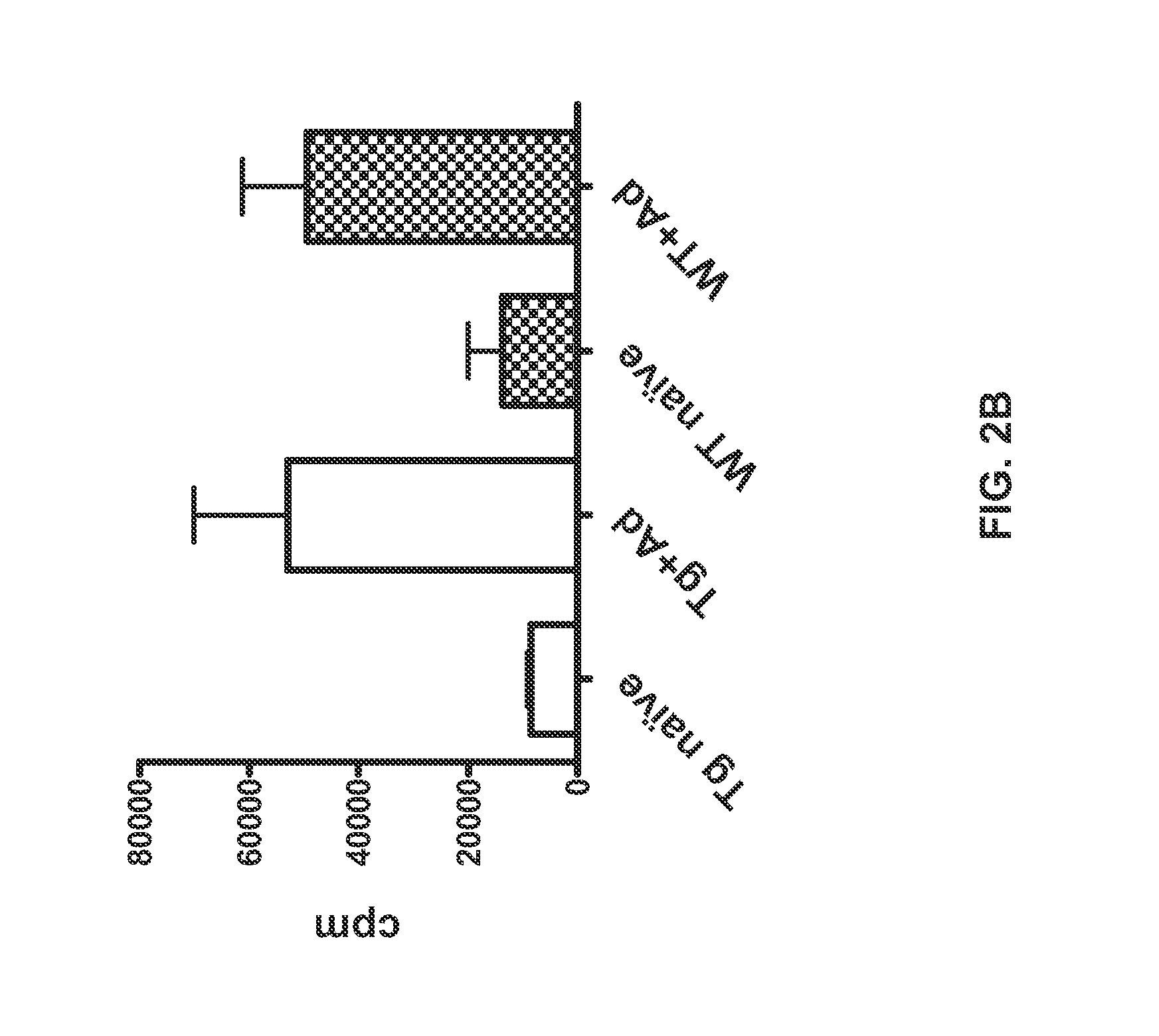Methods and compositions for treatment
a technology of immune system and anticd52, which is applied in the direction of drug compositions, antibody medical ingredients, peptide/protein ingredients, etc., can solve the problems of reducing the effect of cd52+ tumor cells, affecting the in vitro study of in vivo mechanism of action, and undefined mechanism(s) involved, so as to reduce side effects, reduce the effective amount of anti-cd52 antibodies, and reduce the effect of side effects
- Summary
- Abstract
- Description
- Claims
- Application Information
AI Technical Summary
Benefits of technology
Problems solved by technology
Method used
Image
Examples
example 1
Generation of Transgenic Mice Expressing hCD52
[0066]The transgenic mouse expressing hCD52 was created on a CD1 mouse strain background at Xenogen Biosciences (Cranbury, N.J.) by microinjecting mouse embryonic stem cells with a bacmid construct consisting of about 145 kb of genomic DNA from human chromosome 1 containing the entire hCD52 gene and promoter sequence (NCBI MIM: 114280; GeneID: 1043; see FIGS. 13A-C). The murine CD52 gene remained present. Genetic determination of homozygosity or heterozygosity in hCD52 transgenic mice was performed on tail clips using polymerase chain reaction (PCR). Homozygous or heterozygous hCD52 transgenic mice were found to have a normal physical appearance, physiological activities, body weights, and life span comparable to the wild type CD1 background strain.
example 2
Tissue Distribution of hCD52 in Transgenic Mice Expressing hCD52
A. Immunohistochemistry Assays
[0067]Formalin-fixed, paraffin-embedded samples of spleen, inguinal lymph nodes and associated adipose tissue, thymus, pancreas, stomach, testes, ovary and bone / bone marrow from six heterozygous hCD52 transgenic mice (3 males and 3 females) and two CD1 wild-type mice (1 male, 1 female) were cut into 5 μm sections and stained with hematoxylin and eosin (H&E). Serial sections were assessed for tissue morphology and expression of hCD52 by staining with a monoclonal rat anti-hCD52 antibody (CAMPATH®-1G clone YTH34.5, Serotec, Bavaria, Germany) at a dilution of 1:8000. A rabbit anti-rat secondary antibody (Vector Laboratories, Burlingame, Calif.) was then added at a dilution of 1:250. Detection of positive cells was performed using a biotin-free horseradish peroxidase and polymer detection kit (Mach-2 HRP Rabbit, Biocare, Concord, Calif.) followed by a diaminobenzidine chromogen (Dako, Carpenter...
example 3
Expression of hCD52 in Immune Cell Populations
[0069]The pattern of expression and density of hCD52 antigen on various immune cell populations of hCD52 transgenic mice was examined by flow cytometry.
A. Quantification of CD52 Antigen Density on the Cell Surface
[0070]The number of hCD52 molecules present on the surface of different cell populations from hCD52 transgenic mice was quantified using Quantum Simply Cellular anti-human IgG beads from Bangs Laboratories Inc (Fishers, Ind.) according to manufacturer's instructions. Briefly, beads coated with different amounts of anti-human IgG corresponding to a pre-calibrated antibody-binding capacity (ABC) were incubated with saturating concentrations of alemtuzumab / CAMPATH®-1H (Genzyme Corporation, Cambridge, Mass.) labeled with FITC to generate an ABC standard curve based on mean fluorescence intensity (MFI). The ABC standard curve was then used to convert the MFI value obtained with HTC-alemtuzumab binding to a given flow cytometry-deline...
PUM
 Login to View More
Login to View More Abstract
Description
Claims
Application Information
 Login to View More
Login to View More - R&D
- Intellectual Property
- Life Sciences
- Materials
- Tech Scout
- Unparalleled Data Quality
- Higher Quality Content
- 60% Fewer Hallucinations
Browse by: Latest US Patents, China's latest patents, Technical Efficacy Thesaurus, Application Domain, Technology Topic, Popular Technical Reports.
© 2025 PatSnap. All rights reserved.Legal|Privacy policy|Modern Slavery Act Transparency Statement|Sitemap|About US| Contact US: help@patsnap.com



